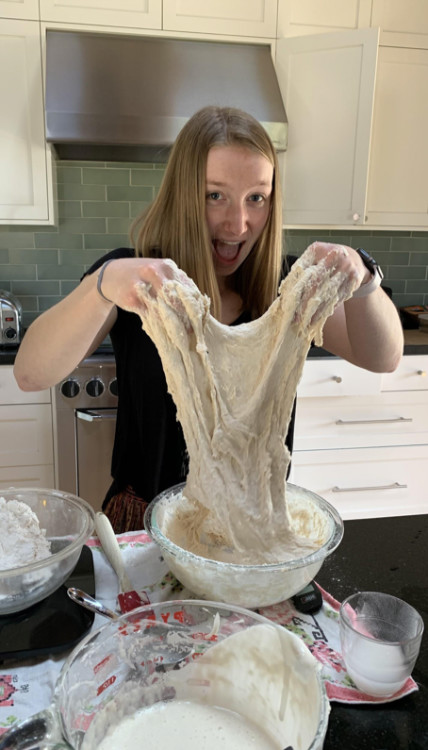New Ways of Teaching: Understanding Clay Through Dough
.ashx?rev=1673ba547cd147beb752381a1572cdd9)
SPOKANE, WA – The shift to online classes has presented an extraordinary challenge for fine arts courses at Gonzaga. The situation has forced art professors to think quickly and efficiently to deliver the same course experience to their students in quarantine. Associate Professor of Art Mathew Rude is implementing a new teaching style using culinary exercises for his now online ceramics courses.
As a professor of 12 years, Rude is always searching for new ways to engage students. With students moving scattered across the country and lacking access to ceramics materials, Rude had to quickly develop a creative way for students to continue sculpting without having to leave their house.
“As a ceramics class, we’ve totally lost our medium. We’ve lost all our course content basically we had to totally change the way we bake,” Associate Professor of Art, Mat Rude
The solution Rude came up with was a new assignment titled ‘Understanding Clay Through Dough.’ Rude created a conversion chart that likens the ingredients in baking to the materials used in clay sculpting. This method helps to demystify the nature of the ceramics materials playfully and cultivates an understanding of the firing process by using household ingredients.
Student Elise Nicols prepares her tartine sourdough for Professor Mat Rude's assignment, "Understanding Clay Through Dough."
Ceramics students are now creating baked goods using the conversion chart for their final projects. Another assignment students have the option of doing is titled: ‘Recreating Your Childhood Home: Gingerbread Edition.’ Students will recreate their homes with materials gathered in the kitchen and outside. They are also encouraged to incorporate their families and those they are quarantining with into the project. They’re making a bonding experience out of the activity. The gingerbread houses allow for family input and is a fun, entertaining break from the regular coursework.
“What I’m trying to do is educate them about the material, but also try to keep them engaged in a way that they’re still thinking creatively,” said Rude.
While recreating a classroom environment over Zoom has been challenging, students are still able to critique and gain feedback on their work by uploading photos of their projects to the class social media pages.
The playful nature of the assignment has helped art students stay engaged despite a lack of access to sculpting materials, and has continued to expand their understanding of ceramics. Rude plans to continue using this exercise once the university returns to a normal classroom setting.
“Students really enjoy it. Plus you can eat your project when you’re done,” said Rude.

